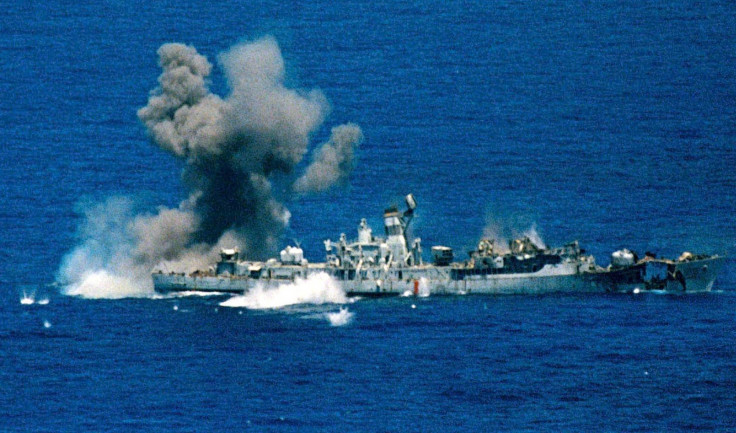This new anti-ship cruise missile tracks its target's own radar to locate and destroy it using AI
Using sensors to look for radar emitters, the missile can home in on enemy ships without alerting them.

The Long Range Anti-Ship Missile (LRASM) is the US Navy's latest addition to its arsenal in order to target ships. It is designed to search for and find enemy ships, and destroy them using onboard AI.
The LRASM is a cruise missile that is set to replace the ageing Harpoon and will be the Navy's first new missile in over three decades, notes a report by Popular Mechanics (PM). This missile can operate in so-called "denied" environments – regions where GPS and other location-based tech is not active or is unavailable – by using sensors to locate targets that are otherwise not possible to find.
LRASM locates its targets using a method inspired by the B-2 stealth bomber, the report says. The missile is equipped with a passive sensor that is constantly looking for radar signals as all ships make extensive use of radar to make sure they are not under attack. This missile will not broadcast any signal, but it just searches for a radar emitter and then flies towards it.
The new missile and its target ship can be likened to two people hiding in a dark room, with one person having a torchlight. While it is possible for the one with the light to make sure that there is no one else in the room, just turning it on will give away their position. The missile works in a similar manner, using the target's radar emitter to locate the ship.
This makes it nearly impossible for the target to defend itself. If a ship wants to protect itself, it needs to keep its radar on, and if the radar is on, it can be sniffed out by LRASM, notes the report.
The missile's artificial intelligence (AI) can also sniff out developing threats in real time, detect them, and either evade or fly around them. Also, once LRASM gets near enough to its targets and spots multiple vessels ahead, it can easily differentiate between threats and makes use of its onboard library of enemy vessels to choose the right target. So if there is a group of vessels ahead, the missile will know that a destroyer is more valuable than a frigate and choose the bigger target.
Apart from choosing the right ship, this missile can also target the right spot on the said ship. An aircraft carrier, for example, can be put out of commission if its 'island' – command centre – is destroyed.
Even in bad weather, or with ships that are difficult to spot because of their shape, this missile can find them because it does not use any radar for location.
The system is called Electronics Support Measures (ESM), notes PM. While this tech is not new and has been used in the F-22 Raptor, the F-35 Joint Strike Fighter and the B-2 Spirit bomber, this is the first time that it has been made compact enough to fit into a missile form factor.
ESM not only reads and looks for electromagnetic signals from radar, it even identifies them. It filters out all other 'noise' and homes in only on its target. Its scanning arc is also wider than radar arcs, notes the report, increasing accuracy and eliminating uncertainty to a great degree.
With a range of 200 miles, and a 1,000 blast fragmentation warhead, this missile can effectively take down a 9,000-tonne destroyer with one, well-placed shot, according to PM.
The report also mentions that the US Navy has ordered a set of 23 LRASMs as of now and that hundreds more, if not thousands, are likely to be built and used.





















